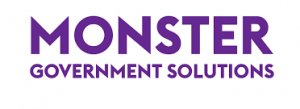What is a classifier? Though defined as a person or thing that classifies something, those with extensive experience in the field of federal human capital management characterizes a classifier as the center-piece of every agency.
Didn’t think you would need a classifier at the deciding table with you before putting a job announcement on the street to attract the right talent? Would’nt think to label them as consultants? You may think classifiers spend their day reading job descriptions, but really, they spend it recruiting the talent needed for an agency to perform its mission. Need a testimony?
“I can remember by name, even today, those who did that work for me – the Sheilas, the Kenny Rowes, the Linda Burletts – people who were very talented at what they did, and it was quite frightening to me as a Human Resource Manager the thought of losing individuals who were absolutely invaluable to the agency’s ability to get their work done,” stated Willie L. Hensley, former Principal Deputy Assistant Secretary for Human Resources and Administration at the Department of Affairs. Hensley was recounting personnel changes in government over the years and the difficulty in keeping a good classifier in the workforce today during GovLoop’s recent online training, “Discover the Future of Position Classification.”
Now, as a Human Capital Management Consultant at the Summit Consulting Group, Hensley still advocates how absolutely critical classification is to the federal sector. Joined by Richard C. Williams, Regional Workforce Planning Officer at the U.S. Geological Survey and Scott Logan, Vice President at Monster Government Solutions during the training, Hensley made the case for why classifiers should be at the table – with human resource specialists and hiring mangers – to choose the talent and skills that management needs in evolving agencies.
The online training, which you can view on-demand here, walked us through the history of position classification – where agencies have fallen down – and what you can do today to make improvements to the outdated processes. Here are key challenges solved by supporting classifiers, by bringing them to the table, as consultants:
- Minimize friction: While managers have a perception of what they want in order to accomplish a mission, classifiers have the challenge of meeting those requirements but staying within the internal equities required in order to achieve that mission. To attract exactly what managers need – and to get the key words needed to evaluate the position appropriately – classifiers need to have a discussion with them that drives a common ground and that avoids “position description roulette,” as Williams puts it.
- Find the flexibility: Make sure there’s a degree of standardization in order to get classifiers to perform in a manner where they’re able to leverage technology, creativity, and innovation – in a modern, effective system that will allow agencies to move towards an e-environment and away from labor-intensive processes.
- Minimize the fear that classifiers are going to lose their jobs if they feel threatened by automation. Hensley notes that the talented pool of very seasoned expert classifiers can help agencies by using OPM tools and internal practices and policies developed to create standard position descriptions.
As Hensley stated numerous times during the online training, which you can view on-demand here, the work of a classifier is the foundation of an agency’s ability to not only recruit talent needed to perform its mission, but to retain the talent it attracts. Because as you know, when employees perform work that hasn’t been clearly defined, they are unhappy and will begin to look elsewhere for employment. Let’s find the tools classifiers need in order to keep pace with a federal system that is changing everyday.






Leave a Reply
You must be logged in to post a comment.